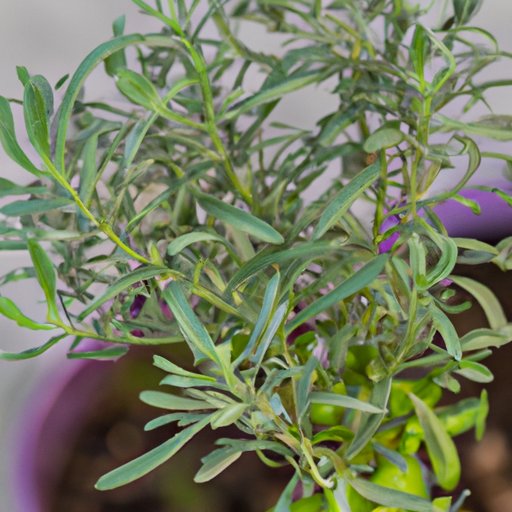Introduction
Lavender is an attractive flowering shrub with fragrant blooms that make it a desirable addition to any garden. It’s easy to maintain and requires minimal effort to keep it looking its best. With proper care, you can enjoy the beauty and fragrance of lavender in your garden for years to come.
Overview of Lavender Plant
The scientific name for lavender is Lavandula angustifolia. It is a perennial evergreen shrub that grows in USDA hardiness zones 5-8. It has gray-green foliage and produces fragrant flower spikes in shades of purple, pink, or white. These flowers are popularly used in sachets, potpourri, and essential oils. Lavender is also used as a medicinal herb and in herbal teas.
Benefits of Caring for Lavender Plant
Caring for lavender plants comes with many benefits. Not only does it add beauty and fragrance to the garden, but it also attracts pollinators and beneficial insects. The leaves and flowers have various medicinal properties and can be used to make teas, extracts, and essential oils. Lavender also helps deter pests and can act as a natural insect repellant.
Choosing the Right Location
When selecting the right location for a lavender plant, there are several factors to consider. First, choose a spot that receives full sun. Lavender prefers 6-8 hours of direct sunlight per day. In addition, the area should have good air circulation to prevent fungal diseases. Avoid planting in areas prone to standing water or excessive moisture.
Watering your Lavender
Once planted, lavender needs regular watering. However, it is important to not over-water. Allow the soil to dry out between waterings. This encourages the roots to search for moisture and become stronger. During periods of drought, give your lavender an extra deep watering every two weeks. This will help keep the plant healthy and prevent wilting.
Fertilizing Your Lavender
Lavender prefers well-drained soils and doesn’t need much fertilizer. If needed, a light application of balanced fertilizer can be applied in early spring and again in late summer. Avoid using too much fertilizer as this can cause leaf burn and reduce flower production.
Pruning Your Lavender
Pruning your lavender is an important part of its care. Prune your lavender in early spring or late winter to encourage new growth and maintain a neat shape. Remove any dead or damaged branches and trim off any long stems. Also, remove faded flowers to keep the plant looking its best.
Protecting from Frost
If you live in a cold climate, it is important to protect your lavender from frost. In winter, cover the plant with a blanket or burlap. This will help keep it warm and prevent damage from freezing temperatures.

Monitoring for Pests or Disease
It is important to monitor your lavender for signs of pests or disease. Common problems include aphids, spider mites, and root rot. If you notice any of these issues, treat them immediately with an appropriate pesticide or fungicide.
Conclusion
Caring for a lavender plant is relatively easy and can be very rewarding. To ensure success, choose the right location, water regularly, fertilize lightly, prune in early spring or late winter, remove faded flowers, protect from frost in cold climates, and monitor for pests or disease. With proper care, you can enjoy the beauty and fragrance of lavender in your garden for years to come.


